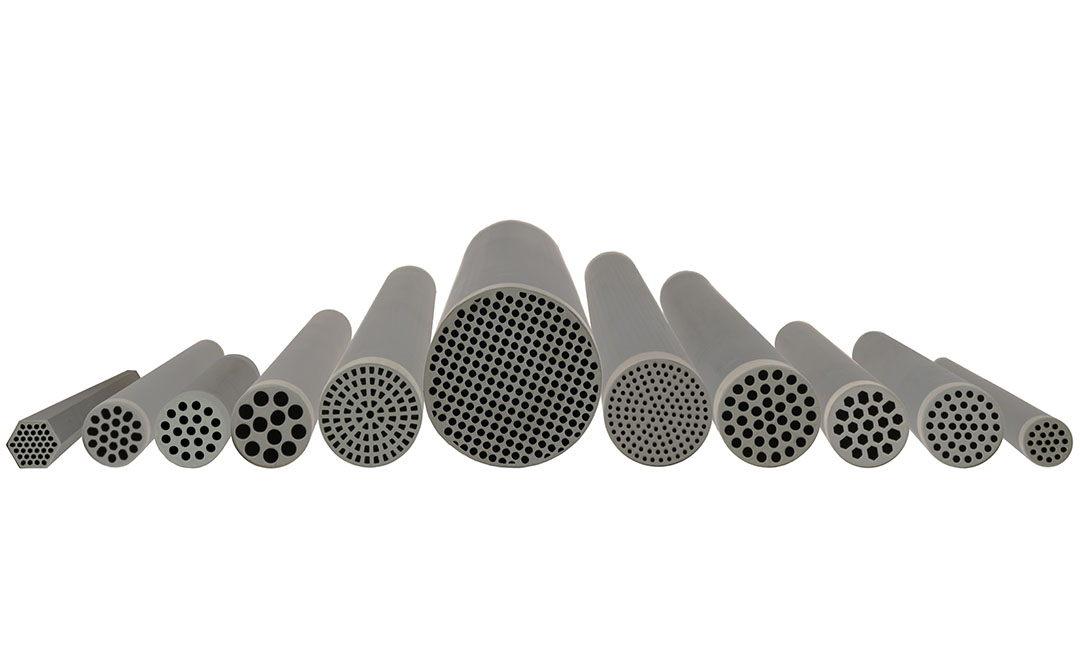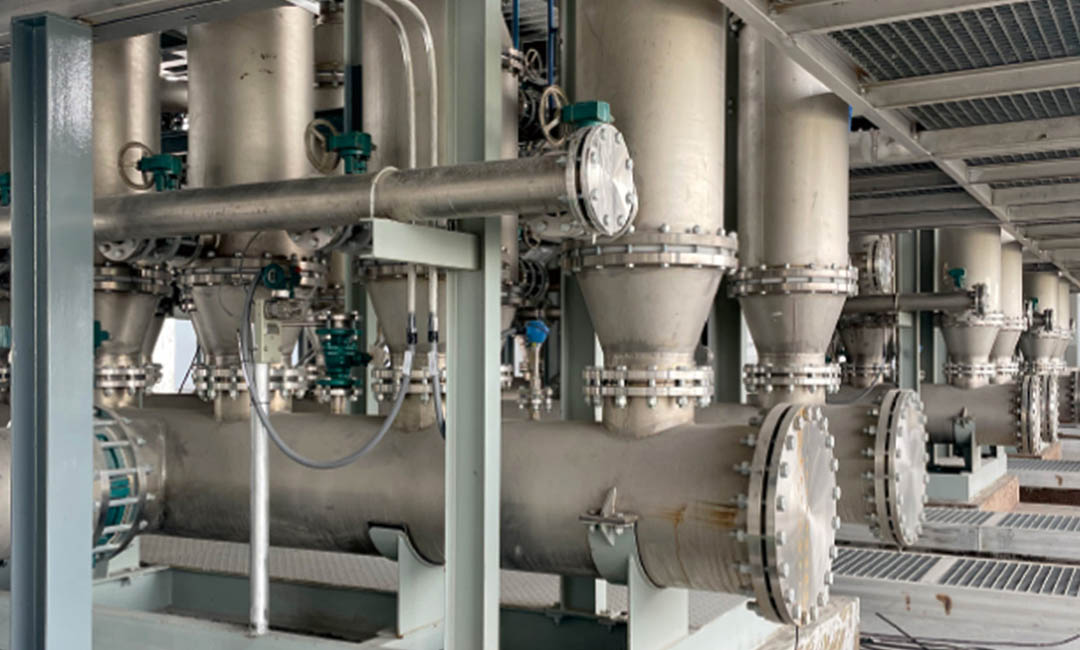Benefits of Using Tubular SiC Membranes for Gas Separation
Gas separation is a critical process in various industries, including petrochemical, natural gas processing, and environmental protection. Traditional methods of gas separation, such as distillation and adsorption, are often energy-intensive and costly. In recent years, membrane technology has emerged as a promising alternative for gas separation due to its high efficiency and low energy consumption. Among the various types of membranes, tubular silicon carbide (SiC) membranes have gained significant attention for their superior performance in gas separation applications.
One of the key benefits of using tubular SiC membranes for gas separation is their high precision. SiC membranes are known for their excellent selectivity, allowing them to separate gases with high efficiency and accuracy. This precision is crucial in industries where even small variations in gas composition can have a significant impact on product quality and process efficiency. By using tubular SiC membranes, manufacturers can achieve precise separation of gases, ensuring that only the desired components are retained while impurities are removed.
In addition to their precision, tubular SiC membranes offer high efficiency in gas separation processes. SiC membranes have a high permeability to gases, allowing for rapid transport of molecules through the membrane. This high permeability results in faster separation times and increased productivity in gas separation operations. Furthermore, SiC membranes are resistant to fouling and corrosion, ensuring long-term performance and minimal maintenance requirements. This high efficiency makes tubular SiC membranes an attractive option for industries looking to improve their gas separation processes.
Another advantage of using tubular SiC membranes for gas separation is their durability and reliability. SiC is a robust material that can withstand harsh operating conditions, including high temperatures, corrosive environments, and mechanical stress. This durability ensures that SiC membranes have a long service life and can maintain their performance over extended periods of operation. This reliability is essential for industries that rely on continuous gas separation processes to maintain production efficiency and product quality.
Furthermore, tubular SiC membranes offer flexibility in design and operation, allowing for customization to meet specific gas separation requirements. Manufacturers can tailor the membrane properties, such as pore size and surface chemistry, to optimize gas separation performance for different applications. Additionally, tubular SiC membranes can be easily integrated into existing gas separation systems, making them a cost-effective solution for upgrading and expanding gas separation operations.
Overall, the benefits of using tubular SiC membranes for gas separation are clear. Their high precision, efficiency, durability, and flexibility make them an ideal choice for industries seeking to improve their gas separation processes. By incorporating tubular SiC membranes into their operations, manufacturers can achieve higher productivity, lower energy consumption, and improved product quality. As membrane technology continues to advance, tubular SiC membranes are poised to play a key role in the future of gas separation.
Applications of Tubular SiC Membranes in Industrial Gas Separation Processes
Tubular SiC membranes have emerged as a promising technology for gas separation in various industrial processes. These membranes, made of silicon carbide, offer both precision and efficiency in separating different gases based on their molecular size and affinity for the membrane material. In this article, we will explore the applications of tubular SiC membranes in industrial gas separation processes and discuss their advantages over traditional separation methods.

One of the key applications of tubular SiC membranes is in the separation of hydrogen from various gas mixtures. Hydrogen is a valuable gas used in many industrial processes, including fuel cell technology and ammonia production. Traditional methods of hydrogen separation, such as cryogenic distillation or pressure swing adsorption, are energy-intensive and costly. Tubular SiC membranes, on the other hand, offer a more efficient and cost-effective solution. These membranes can selectively permeate hydrogen while rejecting other gases, allowing for the production of high-purity hydrogen with minimal energy consumption.
Another important application of tubular SiC membranes is in the separation of carbon dioxide from flue gas emissions. With the increasing concerns about climate change and the need to reduce greenhouse gas emissions, the efficient removal of carbon dioxide from industrial flue gases has become a priority. Tubular SiC membranes have shown great potential in this area. These membranes can selectively permeate carbon dioxide while rejecting nitrogen and other gases present in flue gas emissions. By using tubular SiC membranes, industries can achieve significant reductions in carbon dioxide emissions and comply with environmental regulations.
Tubular SiC membranes also find applications in the separation of oxygen from air. Oxygen separation is crucial in various industries, including medical oxygen production, chemical synthesis, and steel manufacturing. Traditional methods of oxygen separation, such as cryogenic distillation or pressure swing adsorption, are energy-intensive and require complex equipment. Tubular SiC membranes offer a more efficient and compact solution. These membranes can selectively permeate oxygen while rejecting nitrogen and other gases, allowing for the production of high-purity oxygen with lower energy consumption and reduced equipment footprint.
In addition to these specific applications, tubular SiC membranes have the potential to revolutionize gas separation in various other industrial processes. These membranes can be tailored to separate specific gases based on their molecular size, shape, and affinity for the membrane material. This opens up possibilities for the separation of other gases, such as methane, ethylene, or even volatile organic compounds, in industries ranging from natural gas processing to petrochemical production.
In conclusion, tubular SiC membranes offer precision and efficiency in gas separation, making them a valuable technology in various industrial processes. Their applications range from the separation of hydrogen and carbon dioxide to the separation of oxygen from air. By utilizing tubular SiC membranes, industries can achieve higher purity gases with lower energy consumption and reduced environmental impact. As research and development in this field continue to advance, we can expect to see even more widespread adoption of tubular SiC membranes in industrial gas separation processes.
Improving Precision and Efficiency of Gas Separation with Tubular SiC Membranes
Gas separation is a critical process in various industries, including petrochemical, natural gas processing, and environmental protection. The efficiency and precision of gas separation are crucial for ensuring the quality of the final product and minimizing energy consumption. Traditional gas separation methods, such as distillation and adsorption, have limitations in terms of energy efficiency and selectivity. As a result, there is a growing demand for advanced membrane-based gas separation technologies that can offer higher precision and efficiency.

One promising technology that has gained significant attention in recent years is the use of tubular silicon carbide (SiC) membranes for gas separation. SiC membranes are known for their excellent thermal and chemical stability, making them ideal for harsh operating conditions. The tubular geometry of SiC membranes allows for a higher surface area-to-volume ratio, which enhances gas separation efficiency. Additionally, the high mechanical strength of SiC membranes enables them to withstand high operating pressures, further improving their performance in gas separation applications.
One of the key advantages of tubular SiC membranes is their ability to achieve high selectivity in gas separation processes. The unique structure of SiC membranes allows for precise control over the pore size and distribution, enabling the selective separation of gases based on their molecular size and shape. This high selectivity is essential for separating gas mixtures with similar molecular sizes, such as hydrogen and carbon dioxide, which are commonly found in industrial processes.
Furthermore, tubular SiC membranes offer superior permeance, allowing for faster gas separation rates compared to traditional membrane materials. The high permeance of SiC membranes is attributed to their smooth and defect-free surface, which minimizes gas diffusion resistance. This results in higher gas fluxes and lower energy consumption, making SiC membranes a cost-effective solution for gas separation applications.
In addition to their high selectivity and permeance, tubular SiC membranes also exhibit excellent chemical resistance, making them suitable for a wide range of gas separation processes. SiC membranes can withstand aggressive chemical environments and high temperatures, ensuring long-term stability and reliability in industrial applications. This durability is essential for maintaining consistent gas separation performance over extended periods, reducing maintenance costs and downtime.
The integration of tubular SiC membranes into gas separation systems can significantly improve process efficiency and reduce environmental impact. By enhancing gas separation precision and selectivity, SiC membranes enable the production of high-purity gases with minimal energy consumption. This not only improves the quality of the final product but also reduces greenhouse gas emissions and waste generation, contributing to sustainable industrial practices.
Overall, tubular SiC membranes offer a promising solution for enhancing the precision and efficiency of gas separation processes in various industries. Their high selectivity, permeance, and chemical resistance make them a reliable and cost-effective option for separating gas mixtures with high precision. As the demand for cleaner and more efficient gas separation technologies continues to grow, tubular SiC membranes are poised to play a key role in advancing the field of membrane-based gas separation.

